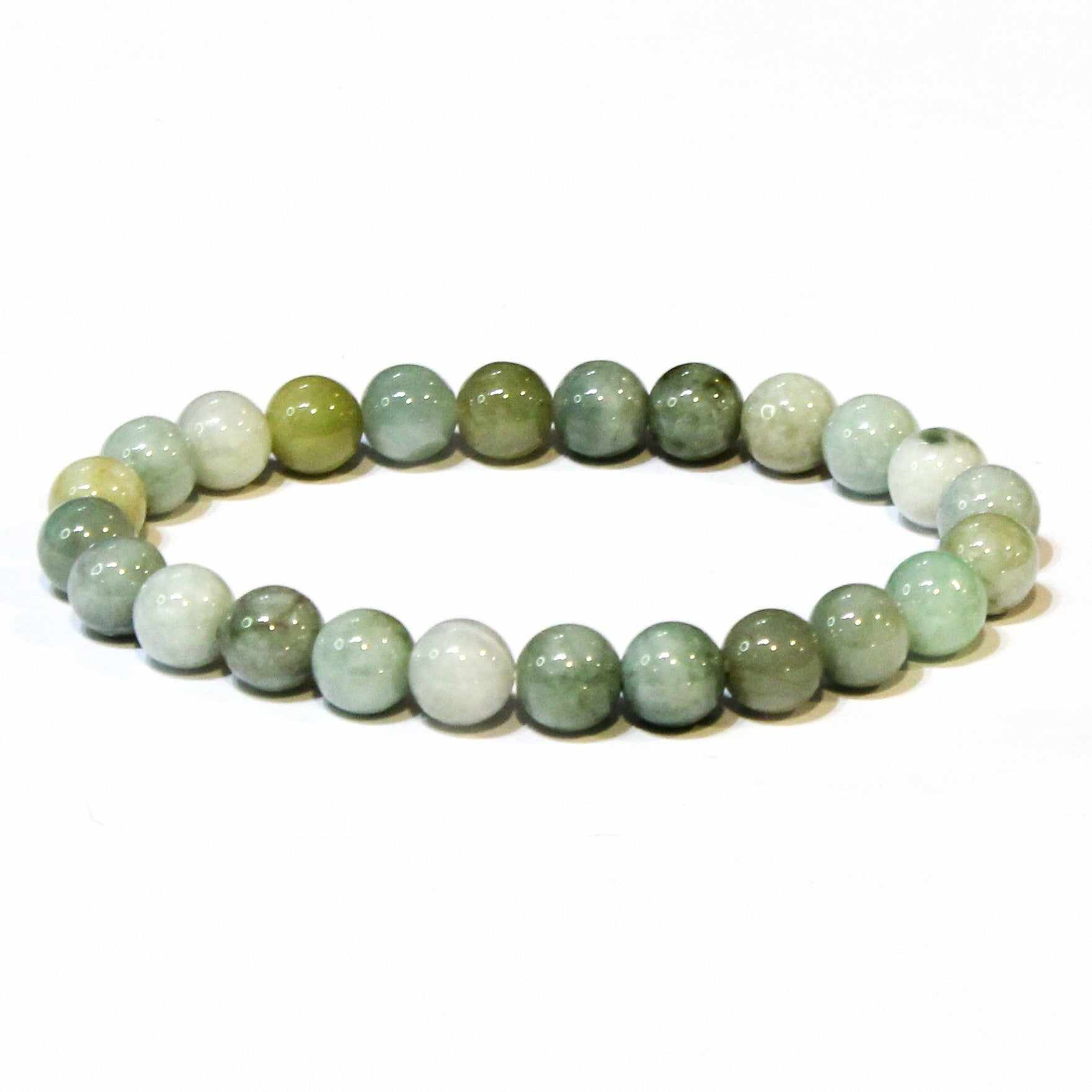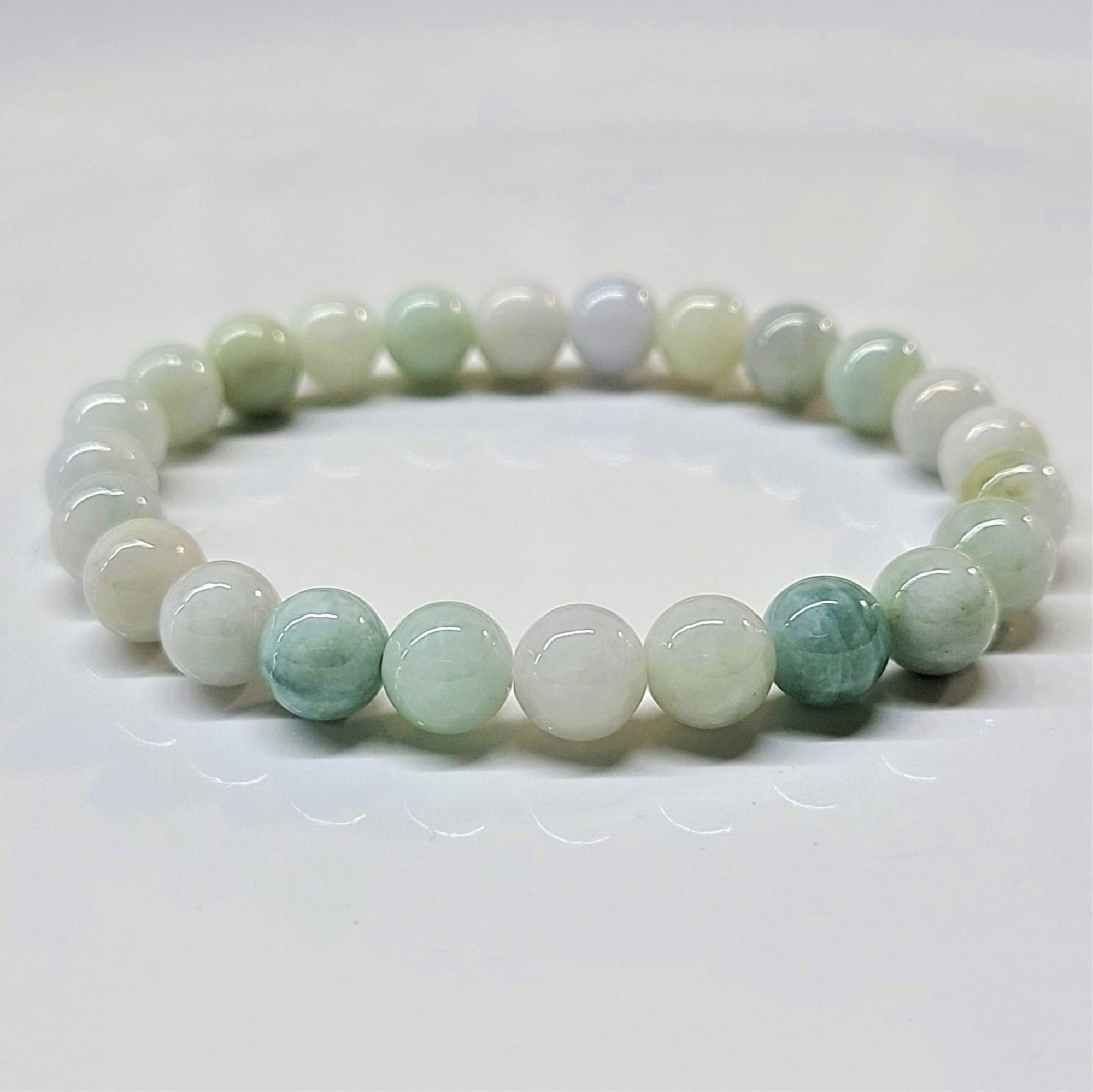

Jadeite Jade Round Bead Bracelet 8mm - Lucky Prosperity
Jade is a precious gemstone revered for its beauty, durability, and spiritual significance. It comes in two varieties: nephrite and jadeite. Both types have been used for thousands of years, primarily in Asia, where jade holds deep cultural and spiritual importance. The stone is most commonly green, though it can also be found in white, lavender, and yellow hues.
Metaphysical Properties of Jade
Spiritual Significance
Jade is often called the "Stone of Heaven" due to its esteemed status in various spiritual practices. It is believed to be a stone of harmony, balancing the energies of the body and the mind. Jade is said to promote emotional release, helping to alleviate fear and anxiety. This stone is also associated with the heart chakra, enhancing love and nurturing relationships.
Prosperity and Abundance
One of the most well-known properties of jade is its association with luck and prosperity. It is often used in feng shui to attract wealth and success. Placing jade in your home or workplace is believed to encourage growth and attract positive financial opportunities.
Protection and Healing
Jade is considered a protective stone, safeguarding its wearer against harm and negativity. It is thought to provide physical and psychic protection, making it a popular choice for amulets and talismans. Additionally, jade is believed to support physical healing, particularly in enhancing bodily functions and promoting overall wellness.
Emotional Balance
Emotionally, jade is thought to be a stabilizing stone, helping to soothe the mind and release negative thoughts. It is known for promoting self-sufficiency, aiding in the recognition of one's own abilities and encouraging self-reliance.
Harmony and Peace
The calming energy of jade is said to foster harmony and peace. It is often used in meditation practices to help align the mind and spirit, enhancing focus and clarity. Jade's serene energy can also promote restful sleep and dreams, making it a useful stone to keep nearby during nighttime.
Geological Formation of Jade
Formation Process
Jadeite and nephrite form through different geological processes. Jadeite forms in metamorphic rocks under high pressure and relatively low temperature conditions. This typically occurs in subduction zones, where oceanic crust is pushed beneath continental plates. Nephrite, on the other hand, forms in regions where magnesium-rich rocks interact with silica-rich fluids, resulting in the creation of this tough, fibrous mineral.
Global Sources
The primary sources of jadeite are Myanmar (Burma), Guatemala, and Japan, with Myanmar producing the highest quality jadeite known as "Imperial Jade." Nephrite is more widely distributed, found in regions such as China, New Zealand, Russia, and the United States.
Physical Characteristics
Jade is renowned for its toughness, which makes it highly durable and suitable for intricate carvings. Jadeite is slightly harder and can take a higher polish than nephrite, but both are prized for their luster and beauty. The colors of jade can range widely, with green being the most common and highly valued. The finest jadeite is a translucent emerald-green variety, while nephrite tends to be more opaque.
Cultural and Historical Significance
Asian Traditions
In Chinese culture, jade has been valued for over 5,000 years. It is not only used for jewelry and decorative items but also for ceremonial objects and talismans. The stone is deeply embedded in Chinese philosophy and tradition, symbolizing purity, moral integrity, and eternal life. In ancient times, jade was used to create ritual artifacts, burial items, and even imperial seals.
Mesoamerican Cultures
The Maya and Aztec civilizations also revered jade, particularly jadeite, for its spiritual and social significance. Jade artifacts have been discovered in tombs, indicating its importance in rituals and as a symbol of power and status. The stone was often carved into intricate figurines, masks, and ceremonial objects.
Modern Uses
Today, jade continues to be a popular material for jewelry and decorative items. It is often carved into intricate designs that reflect its cultural heritage. Jade is also used in modern spiritual practices, particularly in holistic healing and meditation.
Conclusion
Jade is a gemstone of immense cultural, spiritual, and historical significance. Its metaphysical properties of harmony, protection, and prosperity, combined with its geological uniqueness, make it a truly remarkable stone. Whether used in meditation, worn as jewelry, or placed in the home, jade continues to be cherished for its beauty and mystical qualities.
A Special Note on Selecting Crystals, Stones, and Jewelry Online
Our role is to support energetic balance and help the body activate its intrinsic healing abilities. We believe in the spiritual nature of healing, where all healing is self-healing. Our energy work is a spiritual journey, not a medical procedure. Results vary and are not guaranteed. Crystals and energy work are personal choices and should complement, not replace, conventional medical care.



